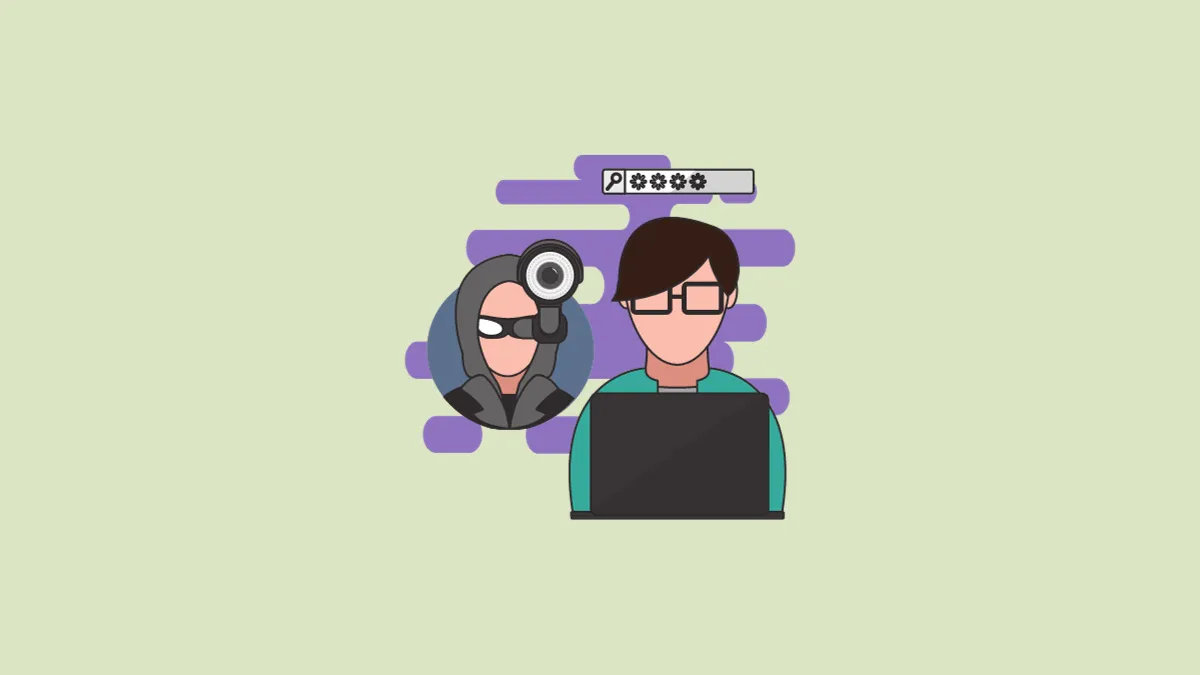Windows 11 might be the safest version of Windows yet, but it's still not hack-proof, just like any other operating system. If malware or hackers sneak into your system, they can steal sensitive data, personal information, and even money. Moreover, they can your computer, your computer to infect other devices and carry out malicious activities, leaving you feeling vulnerable and helpless.
If you are not sure, whether your Windows 11 computer has been hacked or not, look for these signs. Hacking your personal computers can be scary, but it's not always a full-blown cyberattack. Sometimes, it's just a minor annoyance, like someone playing tricks on your computer.
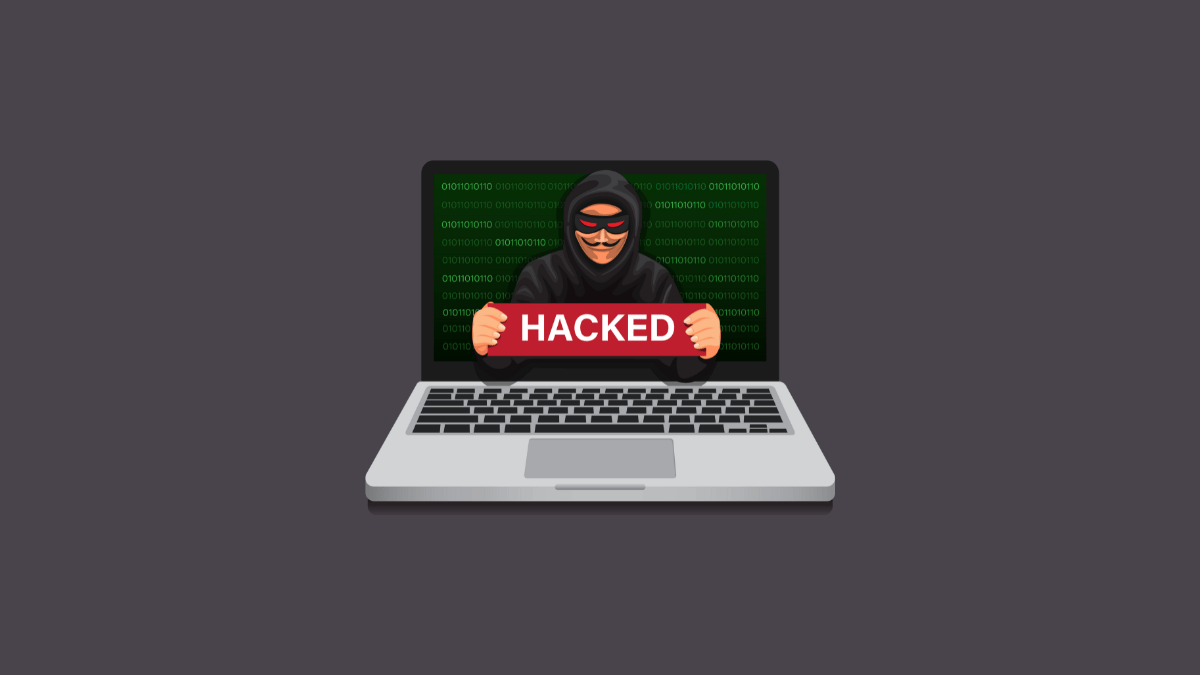
Whatever the case, if you find out you have been hacked or infected with a virus or any other malware, follow these steps to clean it up, limit the damage, and take back control.
1. Disconnect Your Computer
If you think your computer has been hacked, your first step is to quarantine it. This means disconnecting it from any network, including Wi-Fi and ethernet, to prevent it from communicating and spreading malware to other devices on the network. Doing this will also prevent the hacker from accessing your computer remotely.
Simply unplug your computer from the network and turn off all Wi-Fi connections, both through software settings and your physical switch (if your laptop has one).
2. Scan Your Computer for Malware and Viruses
Next, scan your computer with an up-to-date anti-malware or antivirus program for malware and viruses. It's better if you have a dedicated premium third-party antimalware or antivirus program. If you don't have a third-party tool, use the Windows built-in security program - Windows Security.
- Open the Windows Security app by searching for it in the Start menu.
- Then, navigate to the 'Virus & threat protection' and select 'Scan options'.

- Choose 'Full scan' and click the 'Scan now' button.
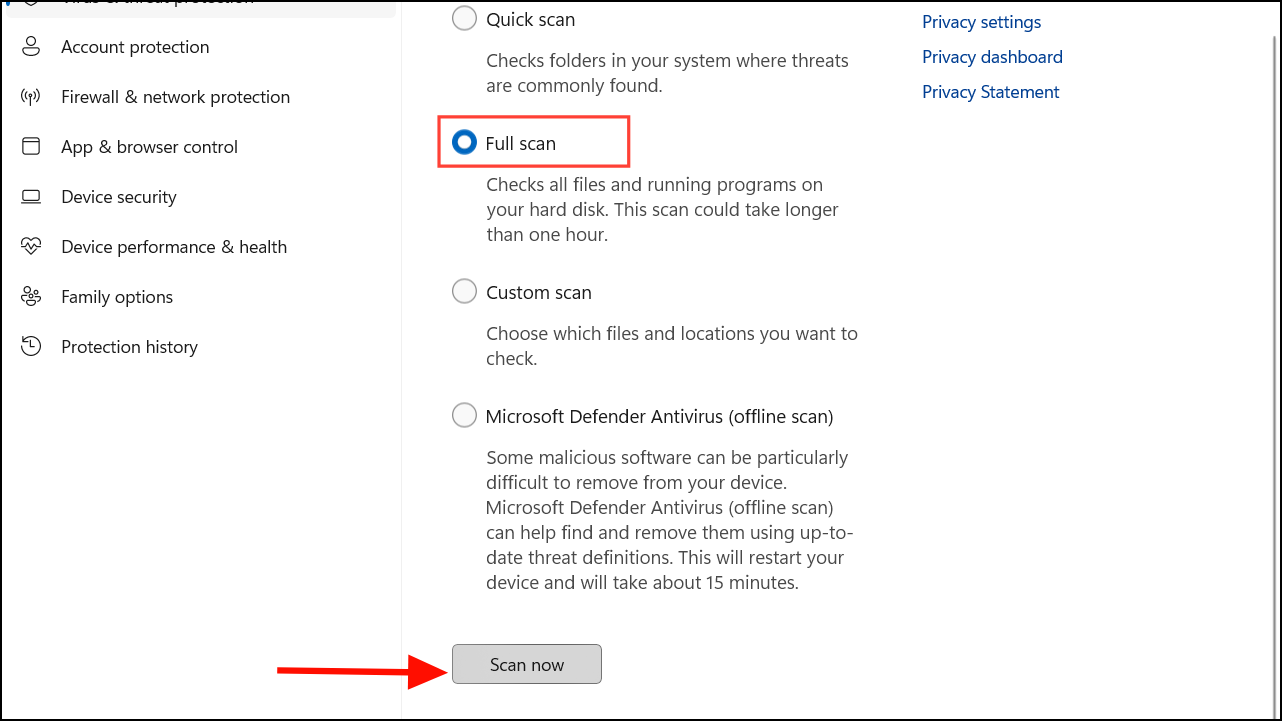
- Wait until the process is complete and check if it removed the malware.
- If the Full scan can do the job, choose the 'Microsoft Defender Offline scan' option.
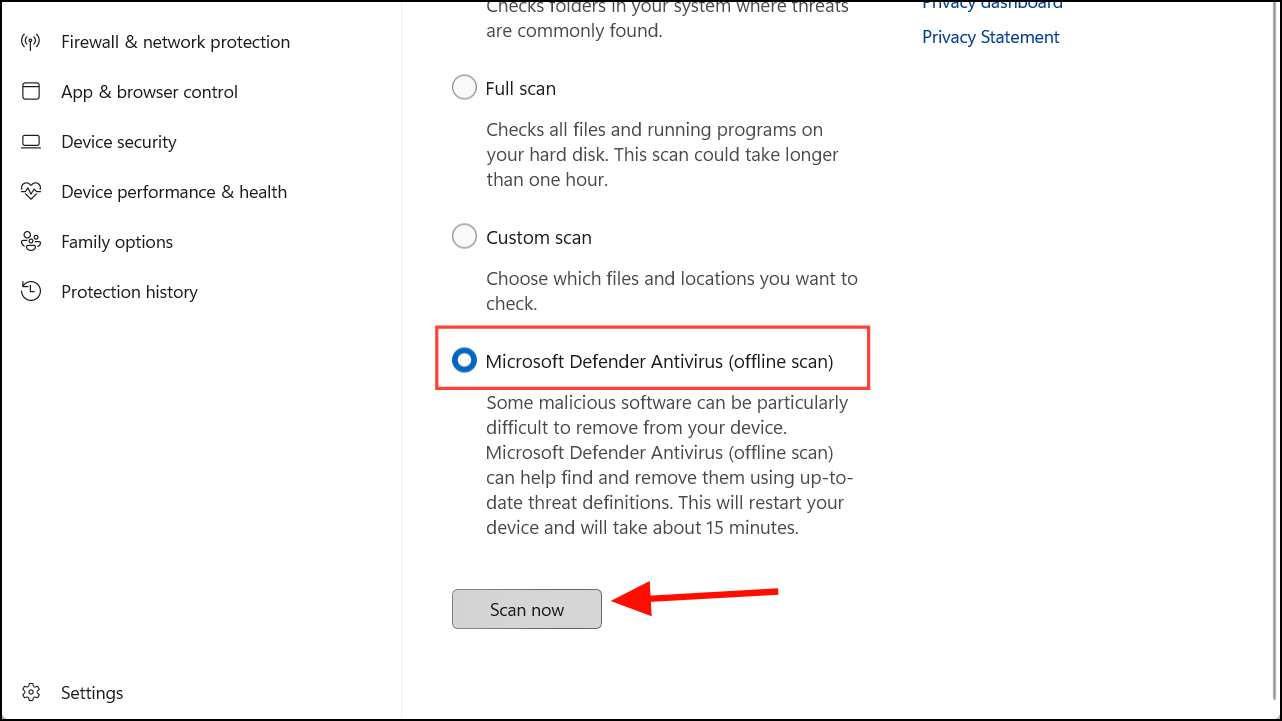
While Windows Defender does a great job at detecting and removing malware and comes pre-installed on all Windows versions, it may not offer the same level of advanced protection as some paid third-party antivirus programs.
3. Change Account Passwords
Change passwords for your devices and all your accounts. First, you need to change your Windows computer password. Then, use another secure computer or device to change your passwords for online services including email, social media accounts, online banking, subscriptions, and any other service where you have stored personal information.
Hackers often steal login credentials for one service and then try to use them on other accounts, so act quickly before your personal and financial information is compromised.
4. Enable Two-Factor Authentication
Enable two-factor authentication (2FA) for all your online accounts, which adds an extra layer of security to your accounts. With Two-factor authentication, you need your login credentials and one of the following: a code sent to your phone, a code generated by a physical security key, or your fingerprint or other biometric data to log in to your account.
Even if a hacker steals your password, they won't be able to log in without the Two-Factor Authentication.
5. Remove the Malicious Programs in Safe Mode
Most malware programs are designed to run automatically when you start your computer. By enabling safe mode, you can help prevent these programs from running which makes it easy to remove them.
- Press
Windows+R, type 'msconfig', and pressEnterto open the System Configuration window. - Go to the 'Boot' tab and select the 'Safe boot' option under Boot options. Then, click 'Apply' and 'OK'.

- Then, click 'Restart' on the prompt. After your system restarts and enters Safe Mode, you can manually uninstall any malware or spyware applications.

- Open Windows Settings, go to 'Apps', and select 'Installed apps'.

- Find the suspicious app, click the three dots, and select 'Uninstall'.
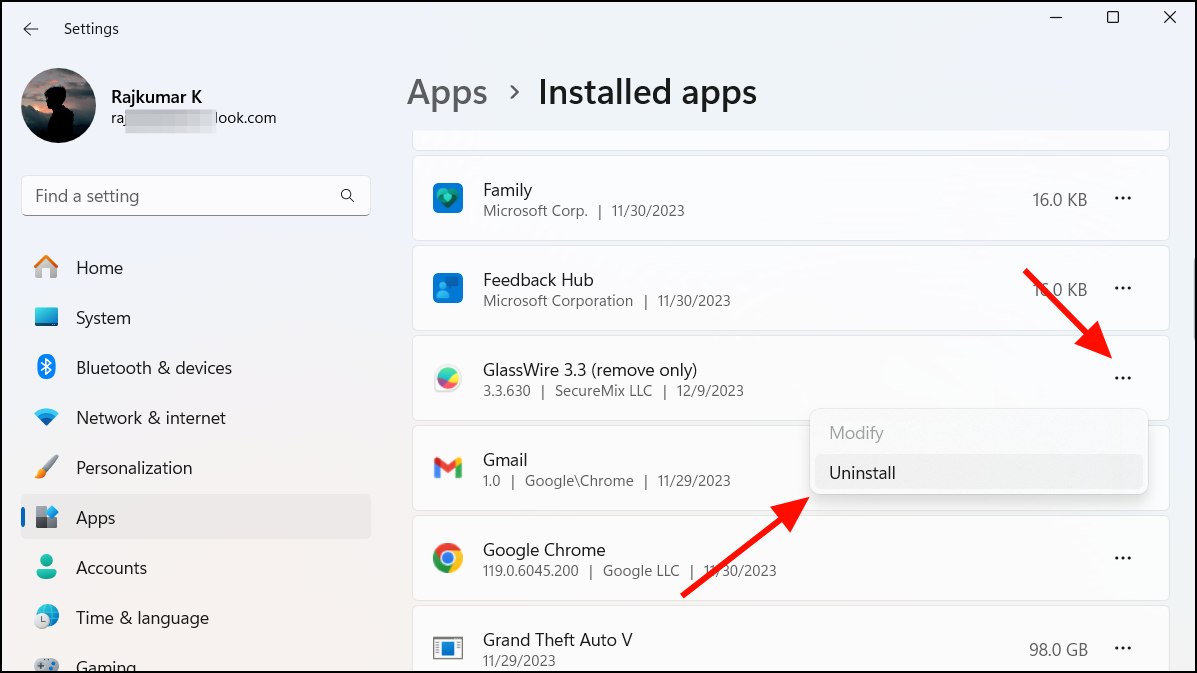
6. Manually Remove the Malicious Process
While some sneaky malware doesn't appear in your list of installed programs (making it harder to remove), it usually runs in the background and shows up in Task Manager. This makes Task Manager a useful tool to find and manually delete such hidden threats. Here's how:
- Open Task Manager with the shortcut keys
Ctrl+Shift+Esc. - Go to the 'Details' tab and look for the suspicious process.

- Once, you found the process or app, right-click on it and select 'Open file location'.

- Note down the location where the malware is located. Then, reboot your computer in Safe Mode and delete the entire folder.
7. Delete Temporary Files
Even after your anti-malware software or you manually remove the main malware apps and files, some residual files may be left behind in temporary files which can reinfect your computer. So after removing the malware, deleting these files can help ensure that all traces of the malware are gone.
- Press
Windows+R, type in%temp%and press 'OK'.

- Then, select all the files in the temp folder and delete them.
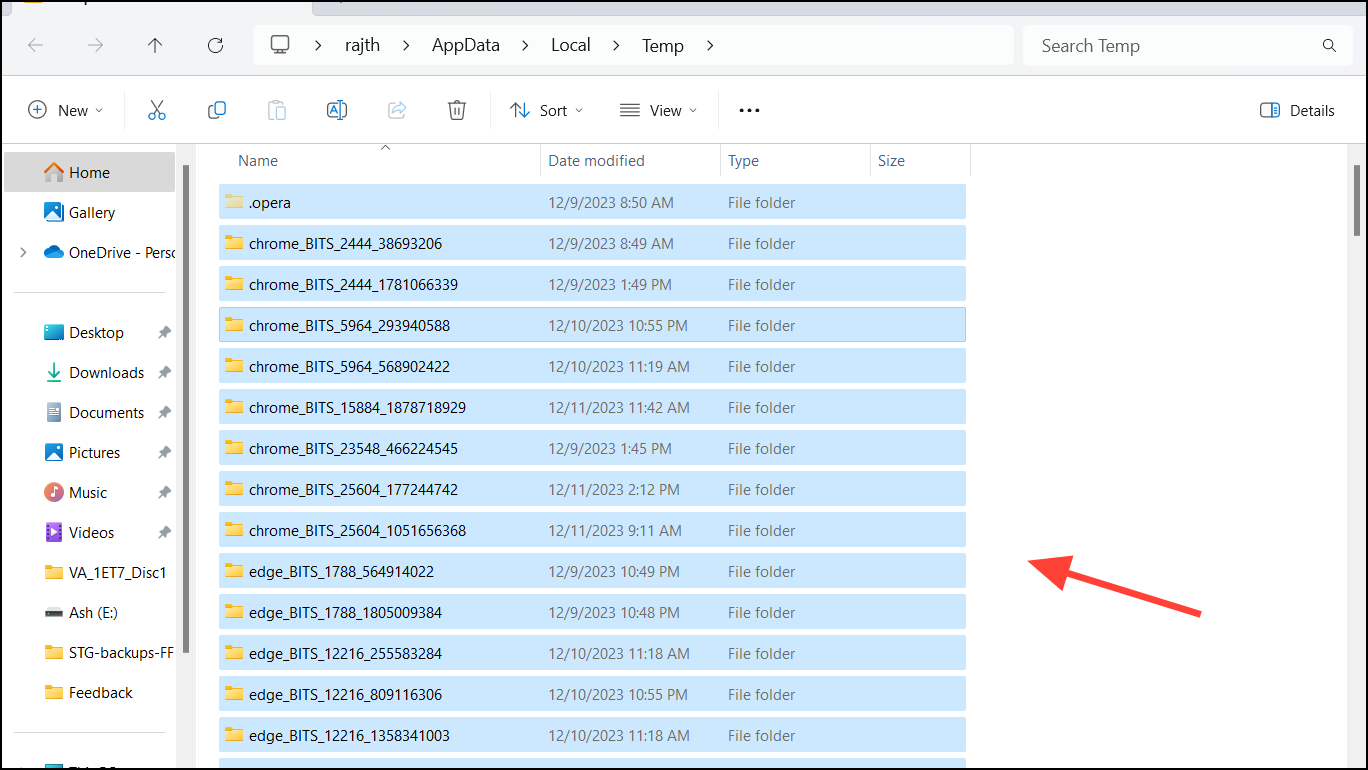
You can also consider using a specialized third-party cleaning software, like CCleaner, to identify and remove unnecessary files, including temporary files, cache data, and registry entries.
8. Blocking Unknown Apps through Firewall
Hackers often leave behind tools or backdoors that can be used to gain access to your computer again. Blocking unknown apps through Firewall makes it more difficult for these tools to connect to the Internet and download more malware.
- Open the Control panel and select 'System and Security'.
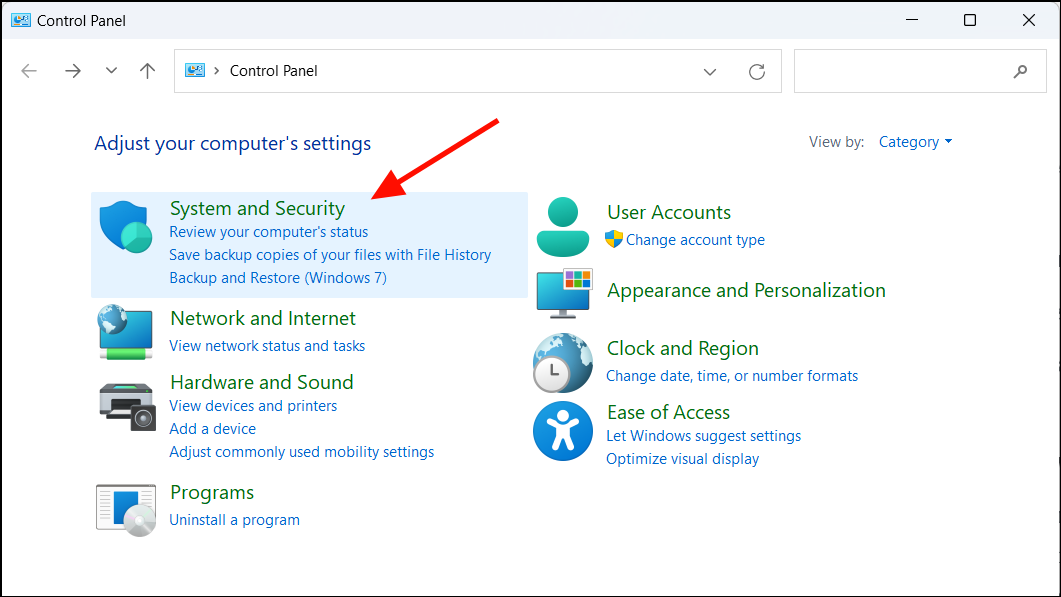
- On the next page, click the 'Allow an app through Windows Firewall' link under 'Windows Defender Firewall'.

- You will see all the applications that communicate through your firewall here. Now, look for any unfamiliar suspicious programs.
- If you find any app or service that you don't recognize, look it up online to make sure it is legitimate. Some applications will only have an acronym like iSCSI (Internet Small Computer System Interface) that doesn't mean they are malware. So, make sure what you are disabling is not a system service or essential app service.
- After finding the malware, click 'Change settings' at the top to uncheck the application.
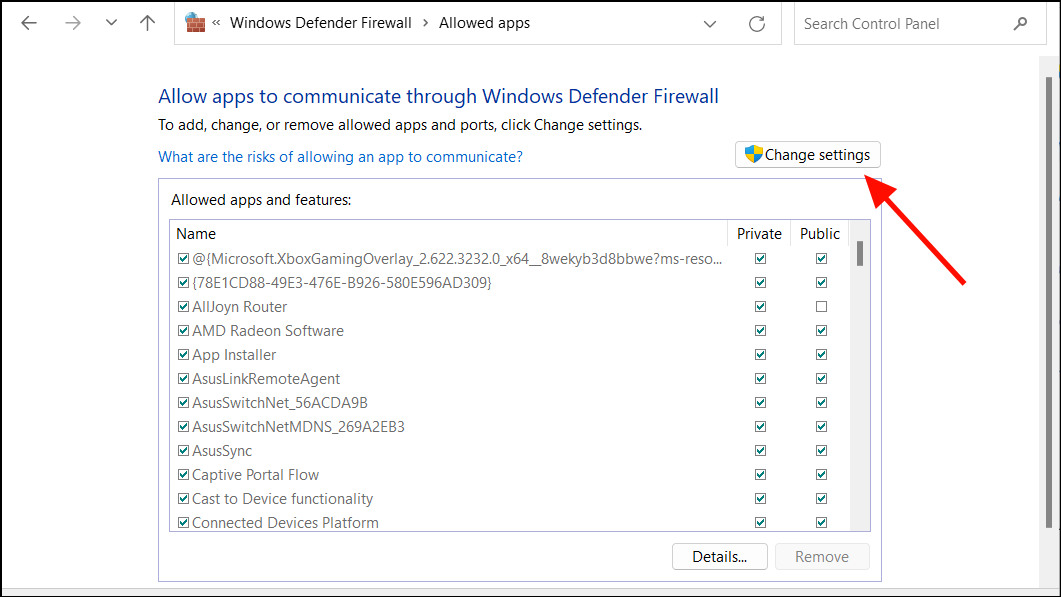
- Then, uncheck the suspicious programs you want to block in the Firewall and click 'OK' to save changes.
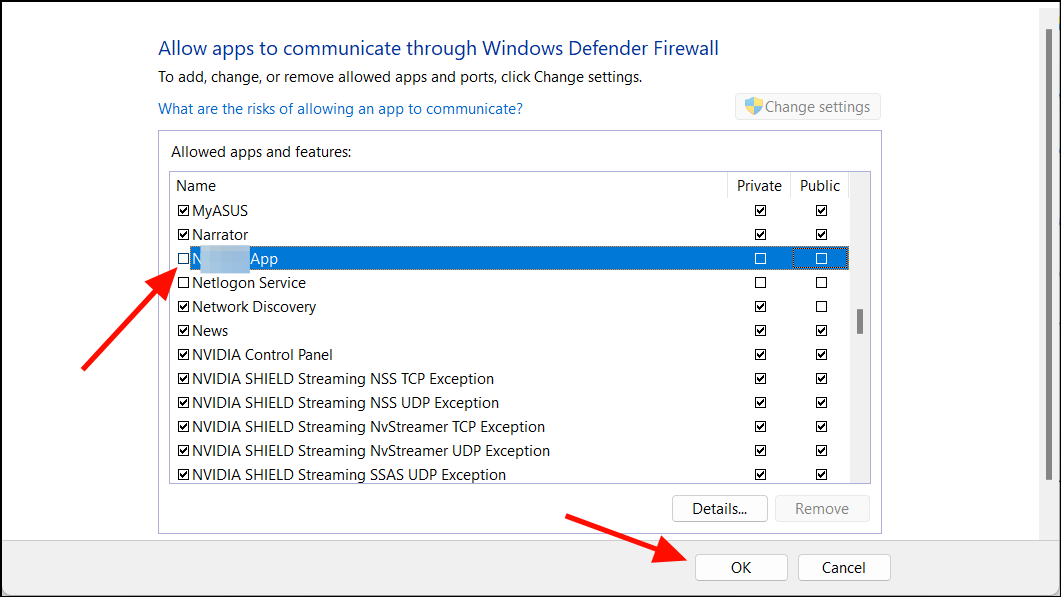
9. Keep an Eye on Your Financial and Personal Accounts
Once you've changed your password, keep an eye on your accounts for failed log-in attempts, strange emails, unexpected bills, fraudulent purchases, or suspicious credit card charges. If you spot any weird transactions or activities, reach out to your bank or the company that manages the account and report it.
10. Reset Your Browser
Browsers are often prime targets for hackers on any computer. Hackers can make changes to your browser settings and install malicious software in the form of toolbars, plugins, and extensions to steal your data and spy on your browsing activities.
Once you discover you have been hacked, after removing the malware, reset your browser and clear all site data, cookies, extensions, and preferences.
While the process of resetting browsers may vary slightly between different browsers, the general steps are often similar. Here's how to reset Google Chrome:
- Open Chrome browser, click on the three dots button at the top left corner, and select 'Settings' from the menu.
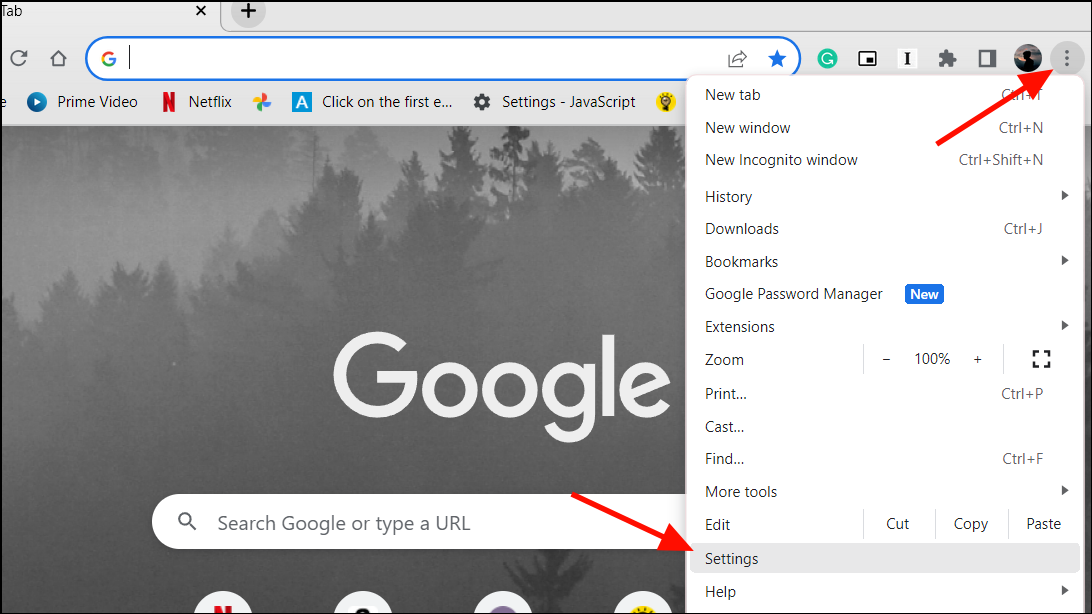
- Select 'Reset settings' on the left sidebar and click on the 'Restore settings to their original defaults' option.
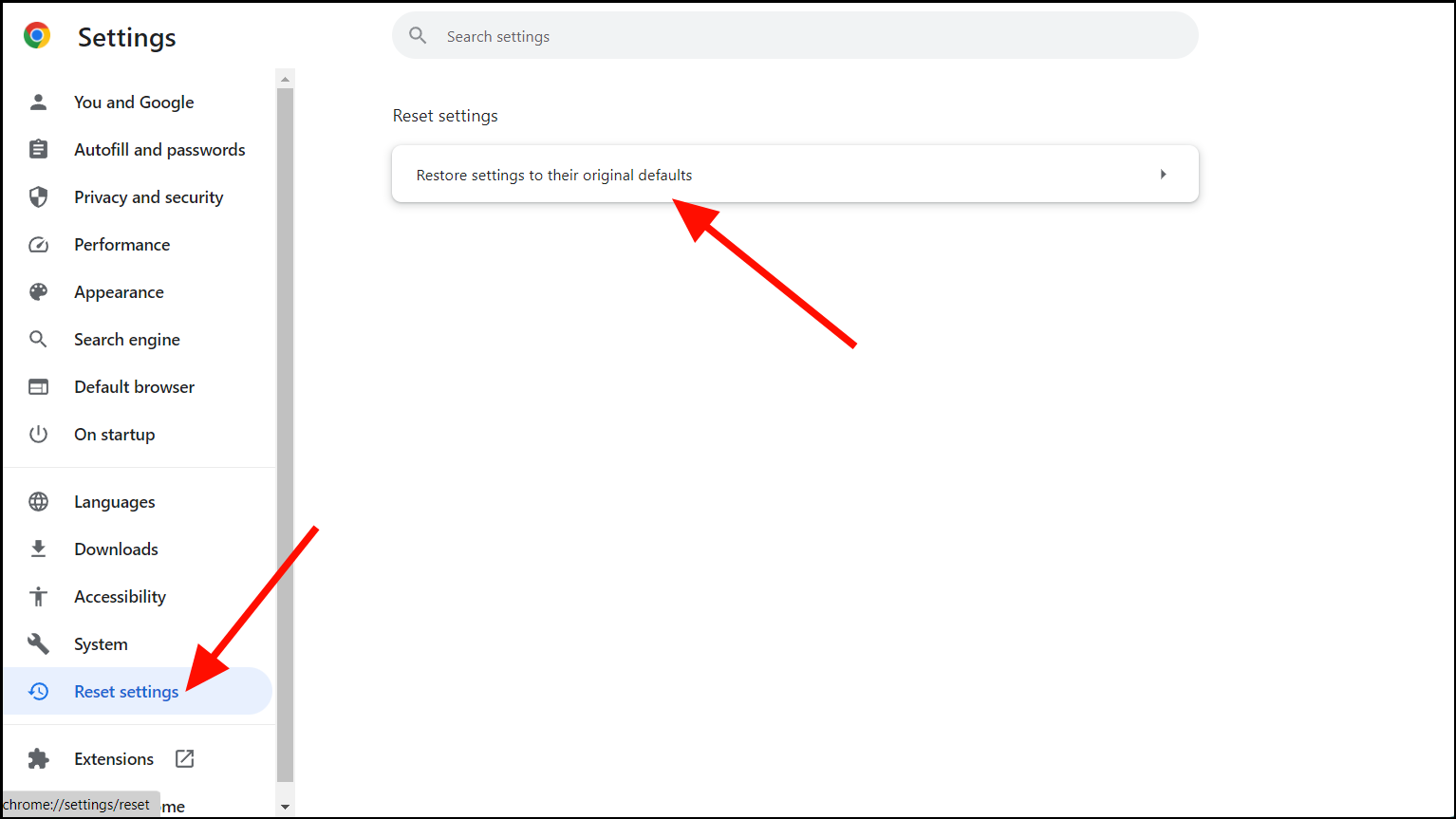
- On the pop-up windows, click the 'Reset settings' button to confirm.
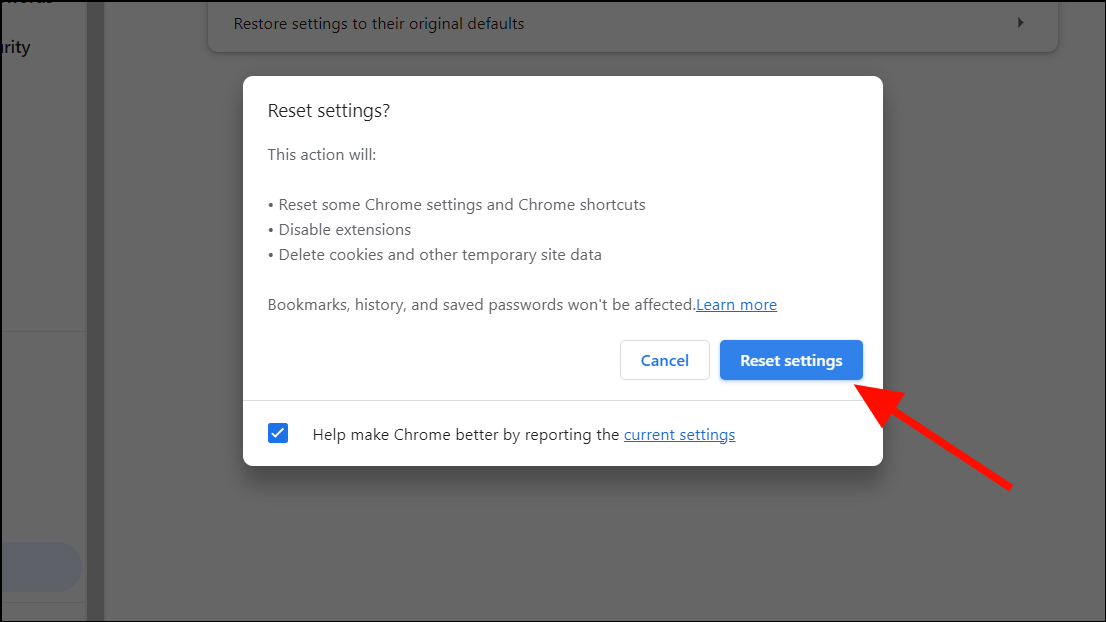
Resetting your browser will erase all your browsing history, extensions, settings, and bookmarks, restoring it to its original state.
11. Inform Your Family, Friends, and Colleagues
If your online accounts or financial accounts were hacked, it's important to inform anyone who might be affected like friends, family, and co-workers. For example, if your email or social media account was hacked, let the people in your contacts know that you’ve been hacked and be wary of phishing emails and messages claiming to be from you.
If the hack was just a small malware infection without any data stolen, you might not need to inform everyone. However, it's still good to warn close contacts who use the same network or services as you.
12. Back up Your Files to the Cloud or External Drive
If you've already safely backed up your crucial data, you don’t need to worry. But if have some important data on the computer, back them up to an external drive or the cloud to avoid further damage. Once copied, scan and clean the external drive for malware using another computer. This ensures the malware doesn't infect your backup.
If the malware infection is severe or data inside the computer is very sensitive and important, do this instead:
- Shut down your computer and remove the hard drive whether it’s SSD or HDD.
- Connect the drive to another PC as a non-bootable drive. You can do that using an external hard drive enclosure or a SATA cable. Before you connect, make sure the second computer has reliable updated antivirus and anti-spyware software.
- Scan the drive for any infections.
- Then, copy your files to your cloud account, CD, or an external drive.
- Once the necessary data is backed up, wipe the original hard drive using a disk-erase utility.
- Insert the original back into the computer first computer and reinstall Windows.
- Scan your backup files for viruses before reintroducing them to your clean PC.
13. Reset your computer
When your antivirus program struggles with a stubborn malware infection, resetting your computer might be the last resort. Resetting your Windows 11 computer to factory settings, like a hard reset, wipes away any malicious software or viruses from Windows.
However, this erases everything depending on your choice, including your favorite apps, personal files, and settings. So you might need to back your personal files on the Windows drive to an external hard drive or cloud storage before resetting the device.
14. Reinstall Windows 11
If you've experienced a serious system hack, consider formatting or wiping your hard drive and reinstalling Windows 11 to fully eliminate any hidden malware, even in empty sectors. Then, restore your backup files to your computer.
Start by creating a Windows 11 installation media using a USB drive. Insert it into the affected computer and perform a clean installation of Windows 11. But before you do, make sure to format the Windows drive. If you're really worried about malware or viruses hiding in other partitions of your computer, consider formatting all the drives. Remember to back up all essential files before you start the process.
15. Seek Professional Help
If you're not comfortable fixing the hacked computer yourself or the damage is severe, it's best to ask for the help of a cybersecurity expert. Besides, repairing the hacker's damage may require specialized tools and knowledge you may lack.
Especially, if your financial, banking, or personal accounts are compromised, these professionals can fully assess the damage, stop further damage, and walk you through the steps to recover your money and data.
That's it.

